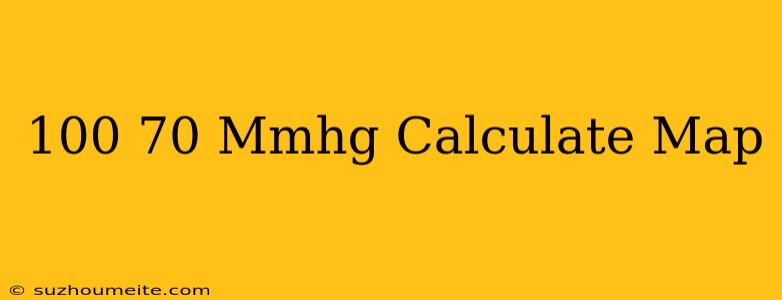Understanding Blood Pressure: Calculating MAP from 100/70 mmHg
What is Blood Pressure?
Blood pressure is the force exerted by blood on the walls of arteries as it flows through them. It is measured in millimeters of mercury (mmHg) and is typically recorded as two numbers: systolic pressure and diastolic pressure. Systolic pressure is the maximum pressure exerted by the heart when it contracts, while diastolic pressure is the minimum pressure when the heart relaxes.
What is Mean Arterial Pressure (MAP)?
Mean Arterial Pressure (MAP) is a calculated value that represents the average pressure in the arteries over a single cardiac cycle. It is a key indicator of blood flow and oxygen delivery to tissues and organs.
Calculating MAP from 100/70 mmHg
To calculate MAP from a blood pressure reading of 100/70 mmHg, we can use the following formula:
MAP = (Systolic Pressure + 2 * Diastolic Pressure) / 3
Where:
- Systolic Pressure = 100 mmHg
- Diastolic Pressure = 70 mmHg
Substituting the values, we get:
MAP = (100 + 2 * 70) / 3 MAP = (100 + 140) / 3 MAP = 240 / 3 MAP = 80 mmHg
Therefore, the Mean Arterial Pressure (MAP) for a blood pressure reading of 100/70 mmHg is 80 mmHg.
Clinical Significance of MAP
MAP is an important indicator of cardiovascular health and is used to evaluate various conditions such as hypertension, hypotension, and shock. A normal MAP range is typically between 70-100 mmHg.
In conclusion, calculating MAP from a blood pressure reading is a simple yet important step in assessing cardiovascular health. By understanding MAP, healthcare professionals can make informed decisions about diagnosis, treatment, and patient care.
